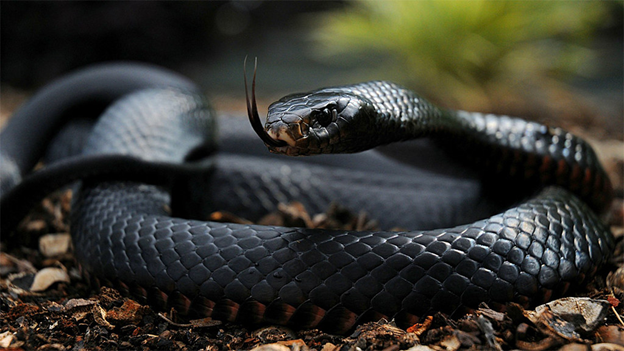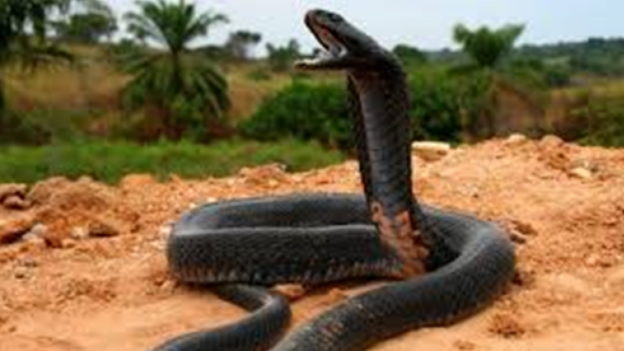Portfolio
In the News
- Characteristics, Treatment, and Outcomes of Patients With Severe or Life-threatening COVID-19 at a Military Treatment Facility–A Descriptive Cohort Study (Feb 21, 2021)
- Magnificent Seven (Feb 4, 2021)
- Complex Mission, Clear Results (Jan 13, 2021)
- USAMMDA's Force Health Protection Division implements COVID-19 treatment protocol across multiple sites (Aug 17, 2020)
- USAMMDA Announces Agreement with Gilead Sciences to Provide Investigational New Drug for Warfighters Exposed to Coronavirus Disease (Mar 2020)
Hemorrhagic Fever
- Hemorrhagic fever with Renal syndrome (Hantavirus)
- Crimean Congo Hemorrhagic Fever
- Lassa Fever
The viral hemorrhagic fevers (VHF) are life-threatening infections caused by a number of different viruses, but these three diseases are caused by either Bunyaviridae or Arenaviridae. These viruses are readily transmissible to humans, and are associated with significant morbidity and mortality. Although, as a group, these viruses have a worldwide distribution, any one virus tends to be limited to a given geographic area, usually that of its vector.
Crimean-Congo Hemorrhagic Fever (CCHF) belongs to the genus Nairovirus, family Bunyaviridae.
Lassa fever (LF) belongs to the family Arenaviridae.
These two viruses cause illness that begins with a nonspecific syndrome of fever, headache and myalgia. Onset of CCHF is abrupt, but insidious with LF. Patients may only have mild disease, which is much more common with LF than with CCHF. In either case, severe disease is marked by bleeding accompanied by organ damage, most often involving the liver and kidneys. A low platelet count, low white-cell count, and protein in the urine occur in both diseases and are suggestive of the diagnosis in the early stages
Mortality rates are usually around 30 percent (range, 13 percent to 50 percent; but greater than 80 percent in some areas of the world) for CCHF, and about 15 percent for patients hospitalized with LF, which may also have significant long-term sequelae for survivors, mainly hearing loss. Up to 25 percent of LF patients suffer from unilateral or bilateral hearing loss that may be total and permanent.
Hemorrhagic Fever with Renal Syndrome (HFRS) belongs to the genus Hantavirus, family Bunyaviridae. It is a viral illness that generally presents as an acute febrile illness, with subsequent development of renal insufficiency and mild hemorrhagic manifestations (e.g., tiny dark spots due to bleeding under the skin, bleeding in the eye and less commonly visible bleeding). Mortality rates vary between Hantaviruses, with Dobrava virus causing more severe disease and higher mortality, and Puumula having less severe disease and lower mortality.
Why is this important? The viruses that causes CCHF, HFRS and LF are found in regions of the world such as the Balkans, Middle East and Africa, where the U.S. military is or may be actively engaged, and thus represent a threat to deployed forces. No effective vaccines have yet been approved. No medical therapies are FDA-approved for the treatment of CCHF, LF or HFRS.
Source: https://www.cdc.gov/vhf/diseases.html
Treatment OptionsIND IV Ribavirin is used for the treatment of three Viral Hemorrhagic Fevers: Hemorrhagic Fever with Renal Syndrome, Crimean Congo Hemorrhagic Fever and Lassa Fever, in two different FHP treatment protocols:
- Intravenous Ribavirin Protocol to Treat Individuals with Viral Hemorrhagic Fever (Crimean-Congo Hemorrhagic Fever or Lassa Fever)
- Treatment Protocol for Adults with Hemorrhagic Fever with Renal Syndrome with IV Ribavirin
Treatment for viral hemorrhagic fever diseases, consisting of supportive care and IND IV Ribavirin given within seven days of onset of disease, has resulted in decreased morbidity and mortality.
Ribavirin is a nucleoside (guanosine) analog, with activity against a wide variety of RNA and DNA viruses. It is licensed in the U.S. in aerosol form (Virazole) by Valeant Pharmaceuticals North America LLC for treatment of severe lower respiratory tract infection due to respiratory syncytial virus in children, and in an oral formulation (Rebetron) for use in combination with recombinant interferon alpha for treatment of chronic hepatitis C infection. IV Ribavirin is not licensed to treat these viral hemorrhagic fevers in the U.S. and will only be used as an investigational new drug in FHP treatment protocols. IND IV Ribavirin is given for seven days for HFRS and for 10 days for CCHF/LF in a hospital setting. IV Ribavirin is stored at a controlled room temperature of 25oC.
Antivenoms
Antivenoms are the only effective treatment to prevent or reverse most of the venomous effects of snake bites. Bites by venomous snakes can cause acute medical emergencies involving severe paralysis that may prevent breathing, cause bleeding disorders (leading to fatal hemorrhage), and result in other issues that can cause permanent disability and/or limb amputation. Sub-Saharan Africa, South Asia and South-East Asia are the areas of highest incidence.
Data suggests that between 4.5 to 5.4 million people per year are bitten by snakes, and 1.8 to 2.7 million of these victims develop clinical illness after snakebite envenomation. Annually, the death toll could range from approximately 81,000 to 138,000 people, while three times as many amputations and other permanent disabilities are caused by snakebites.
Why is this important? U.S. forces are stationed around the world in locations with venomous snakes and/or poor access to antivenom treatments. This is a threat to deployed forces.
Source: https://www.who.int/snakebites/antivenoms/en/
Orthopox
One of the best known orthopox is smallpox, caused by the variola virus, genus Orthopoxvirus. Other members of the Orthopox family that can infect humans are vaccinia virus, mpox virus and cowpox virus.
Smallpox is spread from person-to-person, primarily by respiratory droplets. Transmission by contact with infectious skin lesions or scabs does not commonly occur.
Symptoms: Acute onset of fever >101oF (38.3oC), malaise, head and body aches, and sometimes vomiting, followed by development of a characteristic rash: firm, deep-seated vesicles or pustules in the same stage of development. This rash is widespread including palms and soles.
Mpox is spread from person-to-person, primarily by respiratory droplets; contact with infectious skin lesions or scabs is a less common means of person-to-person transmission. African rodents and primates may harbor the virus and infect humans, but the definitive reservoir host is unknown.
Symptoms: As with smallpox, people experience fever and head and body aches, followed by a widespread rash of pustules involving the palms and soles. Marked lymphadenopathy is a distinguishing feature of mpox.
Why is this important? Variola virus is one of the most significant bioterrorist threat agents. The impact of a potential smallpox virus attack in the human population would be more catastrophic now than in previous outbreaks. Since most vaccination programs were abandoned worldwide in the 1970s, the pace of viral spread would be accelerated through the naive population. Mpox occurs naturally in western and central Africa. It could be made in large quantity and delivered by aerosol in a bioterrorist attack.
Trauma in Combat Casualties
Hemorrhage is still the leading cause of preventable death in combat casualties. From 2001 to 2011, up to 26 percent of total pre-MTF combat deaths may have been potentially survivable and 91 percent of these were due to hemorrhage.
Treatment Option
Product Info: French Freeze-Dried Plasma (FFDP)
In 2010, an urgent-need request was made for the approval and use of French Freeze Dried Plasma (FFDP), which was being used successfully by our allied forces in Iraq and Afghanistan. An expanded-access treatment protocol was established by FHP and approved through the FDA. The indication for this blood product is the resuscitation of severe combat hemorrhage in remote, austere locations. The objective is to keep the patient alive during transport from the battlefield to the hospital and surgical care. U.S. military units have benefitted from the use of FFDP since 2012.
The employed FFDP is manufactured by the Centre de Transfusion Sanguine des Armées (CTSA–France). FFDP is essentially equivalent to Fresh Frozen Plasma (FFP) and is made from a pool of fresh frozen human plasma. Each pool is comprised of a maximum of 10 different donors of varying blood types (but excluding type O) free of anti-Aoranti-Bimmune antibodies, thus assuring a product of universal compatibility that eliminates the need for blood-typing prior to administration. Conventional plasma blood bank products such as FFP or thawed plasma are not usable by medical personnel on the frontlines of combat due to logistic considerations, specifically the need to maintain FFP in frozen state prior to use and then to thaw it in a controlled manner. Similarly, thawed plasma requires storage under refrigeration, which is impractical on the battlefield.
In early 2018, the DOD and FDA launched a joint pilot program to prioritize efficiently developing safe and effective medical products to save the lives of U.S. Warfighters. Public Law 115-92, enacted in December 2017, authorizes the DOD to request, and the FDA to provide, assistance to expedite the development of products to diagnose, treat or prevent serious or life-threatening diseases or conditions facing the U.S. military. As part of this program, the FDA and Health Affairs hold semi-annual meetings to discuss aspects of the scientific and clinical development of products that are important to the health of military personnel. Findings from these meetings inform an FDA guidance document that will help commercial product developers identify opportunities to fulfill unmet medical needs for battlefield settings and other frontline conditions experienced by men and women of the U.S. armed forces.
FDA Information
On July 10, 2018, the FDA granted an Emergency Use Authorization for the emergency use of FFDP for the treatment of hemorrhage or coagulopathy during an emergency involving agents of military combat (e.g., firearms, projectiles and explosive devices) that may cause, or are otherwise associated with, an imminently life-threatening and specific risk to U.S. military forces when plasma is not available for use, or when the use of plasma is not practical. This is a significant step for the DOD in the long-time effort of addressing the leading cause of preventable battlefield deaths: uncontrolled bleeding. The EUA also alleviates much of the administrative burden formerly associated with the use of the product under the IND protocol.
This was the first product to be granted an EUA following the passing of Public Law 115-92
Email: usarmy.detrick.medcom-usammda.mbx.force-health-protection@health.mil

















